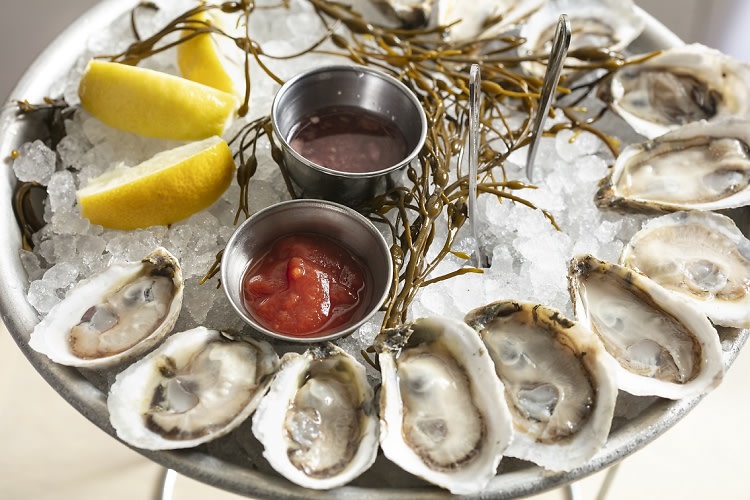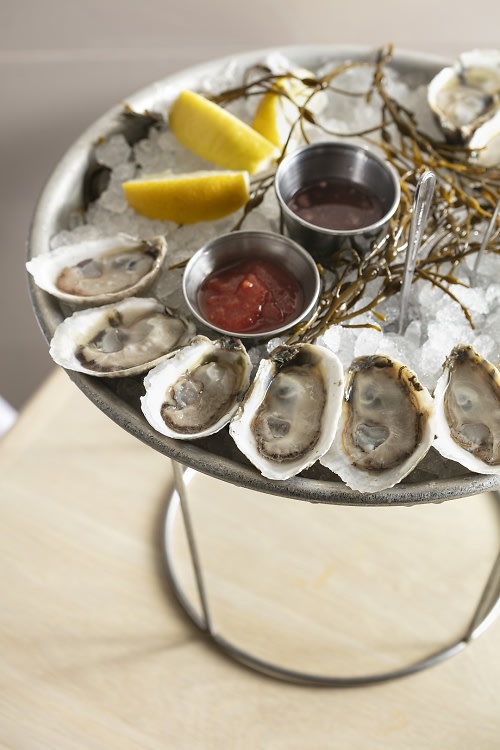
Although you can certainly find us posting up at the raw bar year-round, nothing makes the warm weather days feel closer than a spread of a dozen (or two) oysters plucked fresh from the salty waters. And while we're sure you've got plenty of shellfish feasts under your belt, you might be shocked to learn that... you've actually been eating them wrong this whole time?!
Yep, as it turns out, there is indeed an art to the oyster slurp, along with the proper way to prepare and garnish those briny babies. And if you still haven't been converted to the oyster cult? Well, you probably haven't approached them correctly!
As we gear up for yet another spring and summer on the half shell, we've tapped oyster expert Chef Michael Cressotti of our go-to spot, The Mermaid Inn, to share all of his pro tips, from shucking to slurping to sipping (the best wine pairings, that is).
What's the best way to slurp/eat an oyster?
Chef Michael: Close your eyes, tilt your head back and let the oyster slide into your mouth. Give it a slight chew and swallow. If you've never had one before, just go for it with confidence!
Garnishes - lemon, cocktail sauce, mignonette - what do you recommend and the proper way to use each of them?
Depending on the individual, I suggest having each variety on your tray “naked” - no lemon, no sauce. Taste each oyster and close your eyes and imagine the water and the saltiness surrounding the oyster and its origin. After tasting each, then feel free to add garnishes that fit each type, but always start with a naked oyster first.

What's the proper way to use an oyster fork?
Most oyster forks are used just for the adding of sauce and making sure the oyster was properly cut free from its shell before the “slurp”- picking up an oyster with a fork leaves all the natural juices of the oyster back in the shell. Slurping is the way to go!
Any common mistakes when eating oysters?
Don’t overload the oyster with too much of anything! This takes away from the true taste of the oyster. An oyster loaded with mignonette, cocktail, lemon, and horseradish doesn’t taste much like an oyster anymore. As mentioned before, I strongly suggest first tasting each variety plain or naked before adding any garnish. Again, you want to slightly chew to release the flavors inside the oysters. If you just swallow the oyster whole, you really aren’t getting the true oyster flavor.
If someone wants to serve oysters at home, what are the basic tips for preparing and serving?
Shucking oysters at home is not an easy thing if you never have tried it. Safety first! Use a proper oyster knife and towel to protect your hand in case of a slip. Take your time, go slow, you are in no hurry. I would suggest opening oysters as guests want them, nothing beats a freshly shucked oyster. You don’t want to “pre-shuck” oysters and let the sit in the refrigerator for hours before guests arrive - if you shuck in rounds, put them on ice to keep them chilled as you serve. And the most IMPORTANT suggestion is buying oysters from a trusted seafood purveyor, you want to know when the oyster has been harvested, meaning when it was pulled from the water. All oysters have tags, and the “harvest date” is listed.
What are your wine recommendations for pairing with oysters?
Sauvignon Blanc, Muscadet, and Champagne all pair nicely with oysters, but my favorite is a nice buttery Chardonnay!
Happy slurping!
[Photos by Melissa Hom courtesy The Mermaid Inn]


.jpg)
.jpg)



.jpg)
.jpg)
.jpg)



_amber_guinness.jpg)
